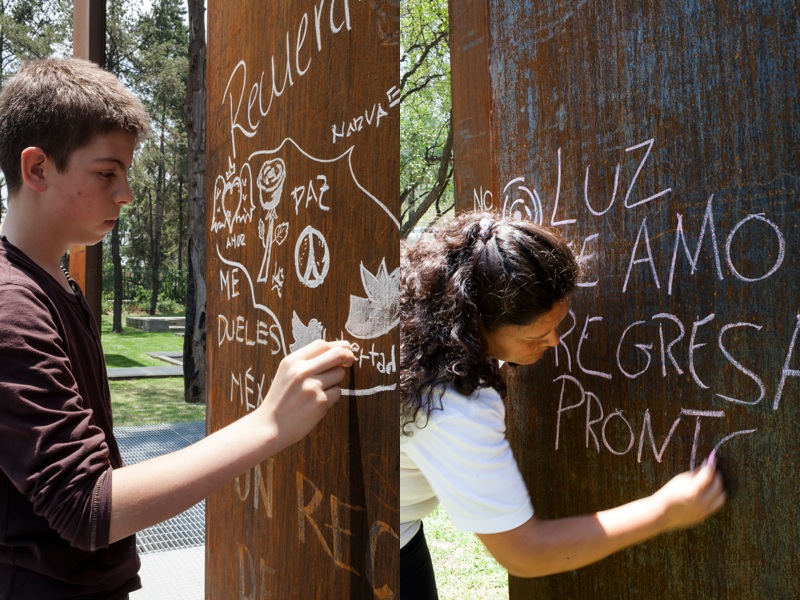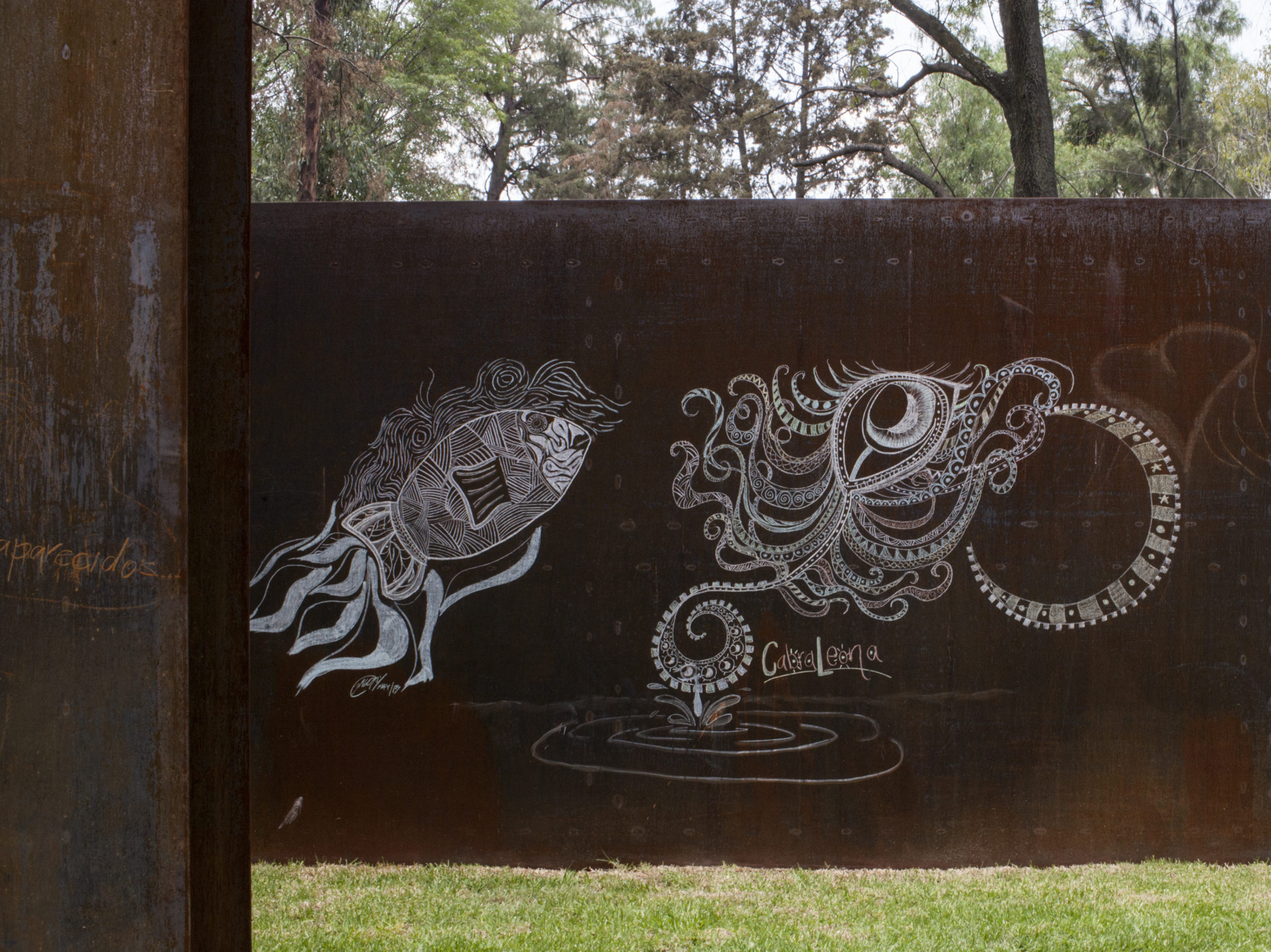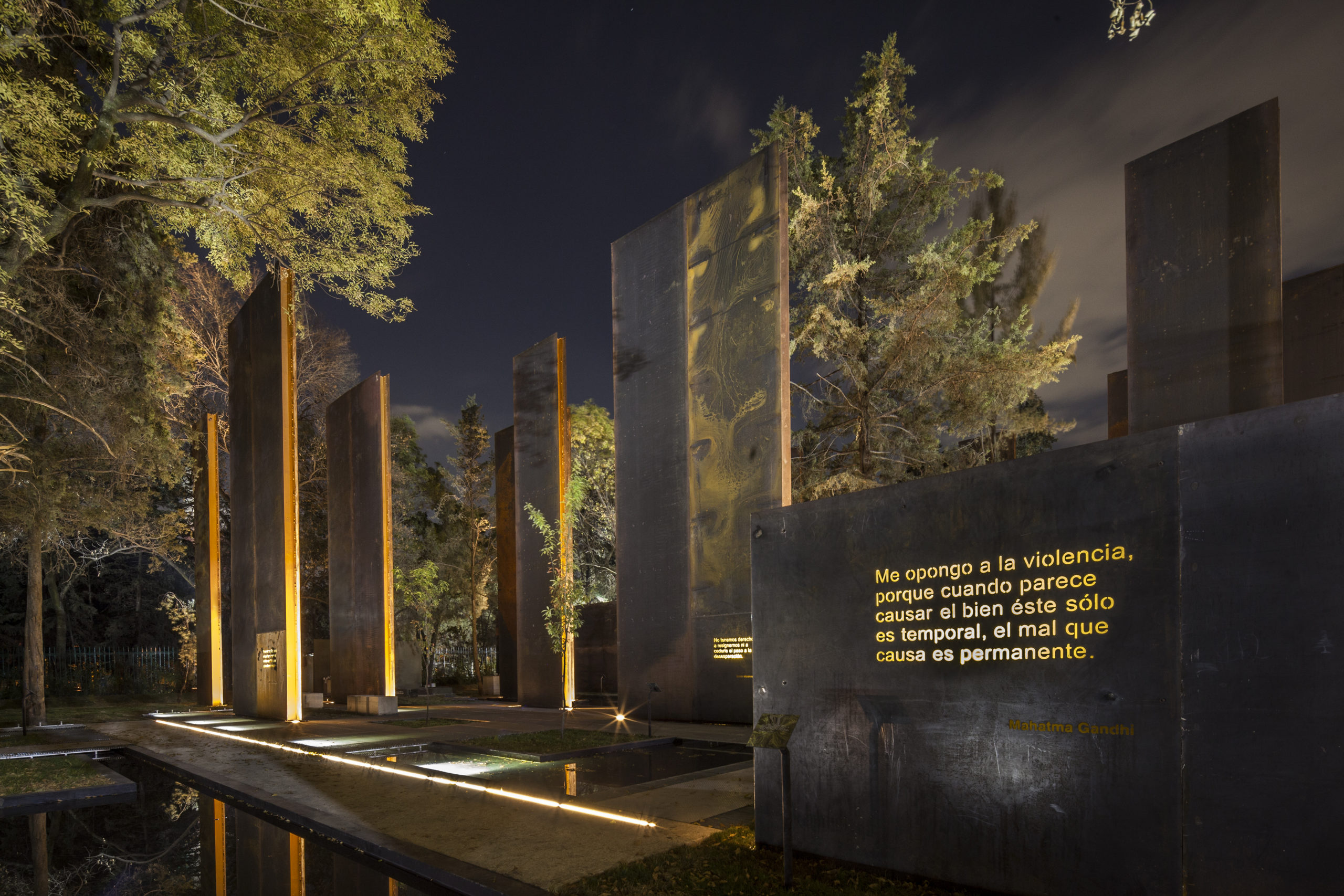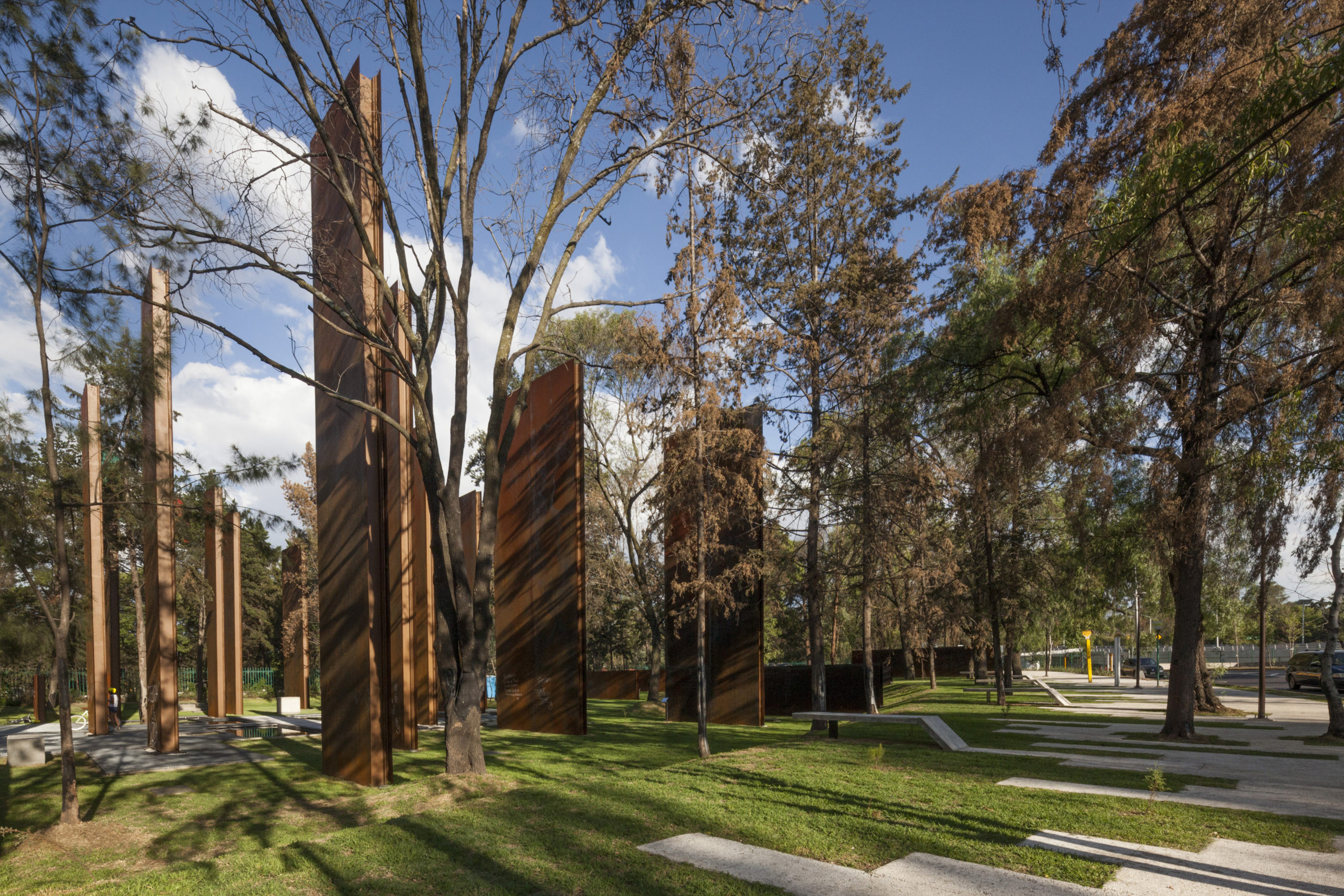Since 2006, there have been 60,000 people killed in drug-related violence in Mexico. That’s actually a conservative estimate. Some think it’s closer to 70,000. And that may not include the missing, up to 10,000 more Mexicans who have simply vanished. In fact, if the new Memorial of the Victims of the Violence in Mexico listed the names of those killed in its drug war, there would be at least as many names there as are found on the Vietnam Veterans Memorial in Washington DC.
But at this memorial, there are no names. While many of the dead include law enforcement officials, border patrol agents, and innocent bystanders, a large number of the deceased are convicted killers, gang members, organised crime kingpins. Victims also, perhaps, of a corrupt government? And with no clear way to define who the victims of the drug war are, adding names becomes problematic. Activist Isabel Miranda de Wallace, whose son was kidnapped and killed, articulated the issue to the Los Angeles Times: She would not want her son’s name alongside that of a cartel hit man.
According to the architects, the memorial — which was paid for with money seized from cartels — seeks not to enumerate the lives lost, but to become a conversation about the violence the country has suffered.

The memorial, which was designed by Gaeta Springall Arquitectos, is made from 70 pieces of weathered of Corten steel, some raw, some with mirrors on their sides. Concrete walkways meander through the panels, past benches, swatches of grass and pools of water. It’s much like a fragmented Richard Serra sculpture, although here, visitors are able to interact with the slowly rusting monoliths. A message on one of the slabs encourages visitors to “Pinta lo que sientes … expresa lo que piensas”: “Paint what you feel … express what you think.” So among the (permanent) quotes from writers and thinkers on peace like Gandhi and Octavio Paz are inscriptions left in chalk or paint or etched into the steel from whoever has something to say.

Although it’s been open since April, the memorial has not yet been overrun by graffiti, as one might expect. But as a recent story in the New York Times notes, like any open comment thread, the messages are still not completely on-topic. The story lists some of the audience contributions, which range from political commentary, to personal memories of the slain by family and friends, to a groundskeeper who likes to draw Gene Simmons when he gets bored. While the etchings stick around, the chalk fades slowly away over time, leaving haunting, ghostly images.

Memorials don’t always name or enumerate the deceased, of course: the Memorial to the Murdered Jews of Europe honours millions anonymously with 2711 concrete slabs (a number that doesn’t stand for anything; even architect Peter Eisenman has offered several different explanations). But in this case, it’s not only a matter of not knowing all the names of the dead or missing, it’s that so many details about these deaths are never reported. The relatives of victims don’t want their family names to be associated with crime sprees. Mexican cities and states don’t want to be known as dangerous places. Plus, the government believes that the media sensationalizes the violence, so coverage is often purposely suppressed.

Maybe that’s why the memorial is tucked away in a corner of Chapultapec Park, according to Alec Perkins, who writes about the memorial at Archinect, “where unless you know where to look for it, you are unlikely to stumble across it.” The memorial is also adjacent to a polo field where, he notes, your quiet contemplation may be disrupted by the crackling voice of the announcer or the wafting scent of horse excrement. The placement almost makes it seem like the memorial is supposed to be hidden from view. Some victims’ organisations refuse to acknowledge this site entirely, preferring a more prominent memorial named the Tower of Light.
But this part of the park actually belonged to Mexico’s Ministry of Defence for years, so what was government land has now been returned to the people as more than three-and-a-half acres of public space. And according to the architects, that was a key part of the memorial’s strategy to acknowledge violence, what they call “the big and open wound” for Mexico. “In response to this, we propose an open project in the site, open to the city and open to the approbation by the citizens,” says principal Julio Gaeta. “The recuperation of the public space as well as the remembrance of the victims of violence are the essence of the project.”

The design of the memorial — tall, imposing, sobering dark walls, which can almost feel like gravestones — is not unlike the Vietnam Veterans Memorial. But visiting the Vietnam memorial is a cold, almost sterile experience: it doesn’t invite you to linger, and it doesn’t afford any privacy. Here, the site makes all the difference. Sitting in the forest, among the shadows of the panels, is a much more intimate, physical way to commemorate lives. Even if the memorial doesn’t list names, by allowing expression on the walls it acknowledges that the violence is a very personal pain, and creates a way for Mexico’s citizens to express their uncensored feelings about about the national crisis.
Mexico’s new president, Enrique Peña Nieto, gave his first state of the nation speech this week, six months after he was elected on a platform which vowed to change the country’s strategy on drug violence. It’s estimated that homicides associated with organised crime have plummeted by almost 20 per cent since he took office, and in July, he successfully captured the head of the brutally violent Zetas cartel, a big win for his administration. But many Mexicans think they’re seeing more of the same (see journalist Anabel Hernández’s book Narcoland, out this month).
During the 2012 US presidential election, much was made about the fact that the candidates rarely discussed Mexico’s drug policy, a trend that’s continued during President Obama’s trip to Mexico this year. Perhaps speaking more openly about the drug war might be the first step in reversing a trend that’s paralysed the country for the past decade. At this memorial, the writing will quite literally be on the wall about the suffering the drug war has already created — in a way that the government will hopefully be unable to ignore.
Pictures: Sandra Pereznieto, courtesy Gaeta Springall Arquitectos
